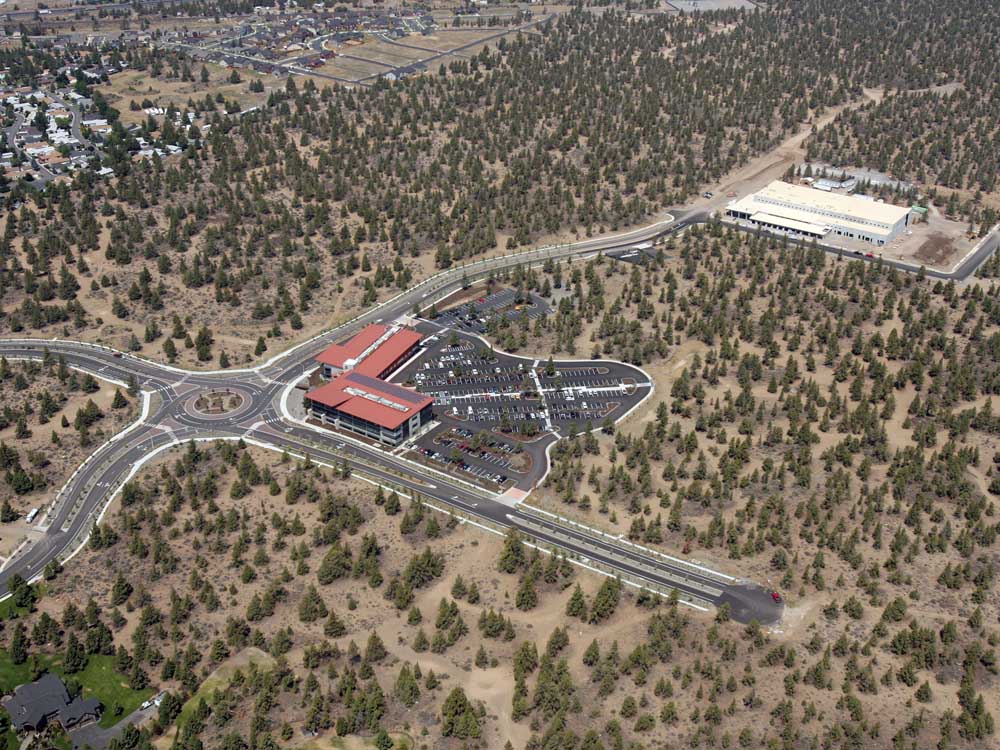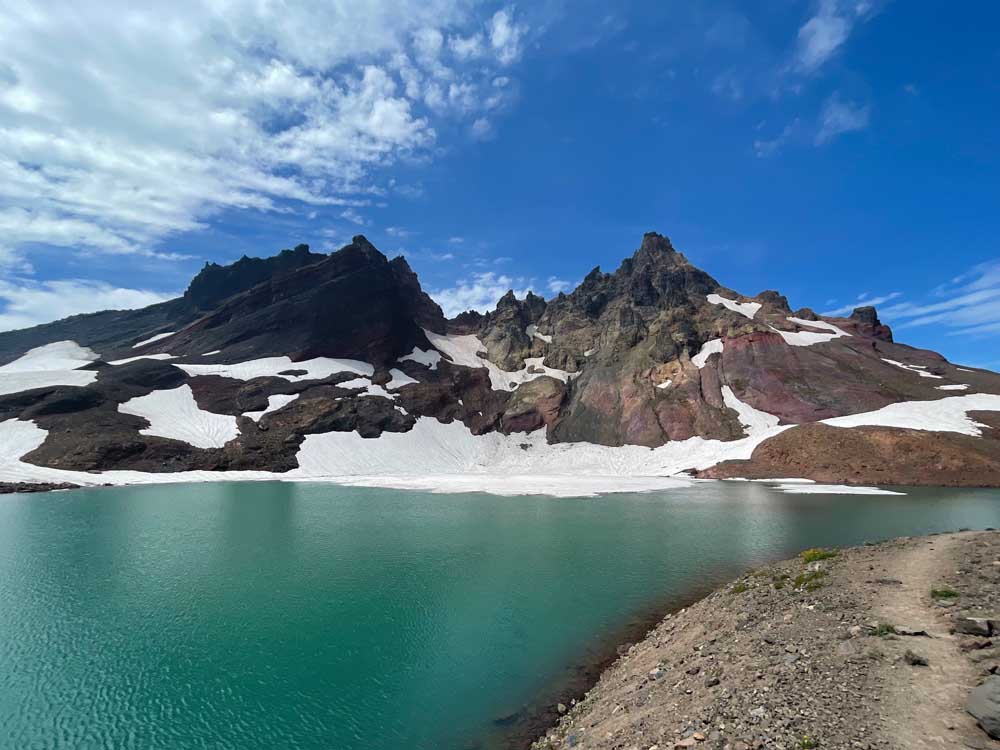OSU-Cascades says opponents are spreading misinformation
Published 12:00 am Saturday, March 28, 2015

- File photo / The BulletinJuniper Ridge area in an aerial photo shot Tuesday, 8/11/09.
As opponents of the proposed OSU-Cascades campus mount a legal challenge in Salem, they are also trying to turn leaders across the state against the expansion, relying in part on information the university says is false.
Truth In Site formed in early 2014 to block the university from building a campus on Bend’s west side. The organization, which says it has around 800 members, hired a lawyer to argue the campus is illegal under the city’s development code.
Trending
Running parallel to its land use challenge , the group is lobbying leaders in Bend, Corvallis and Salem, arguing the university has made a costly and disruptive choice in locating its new campus within a busy section of town. Truth In Site insists a better location would be on the fringes of the city, where any impact on existing neighborhoods would be minimized and the college could spur new development.
The group’s efforts have included claims that the school was offered and rejected an expansive swath of free land while costs for the small west-side location have tripled — claims the university says are untrue.
The legal challenge is ongoing but has so far been unsuccessful in every way except delaying OSU-Cascades. Both the Bend City Council and Ken Helm, an independent hearings officer who is now a state representative from Washington County, ruled the campus plan met all requirements.
After those two decisions, Truth In Site appealed to the state Land Use Board of Appeals. A ruling is expected by the end of April, but the case could be taken to the Oregon Court of Appeals and state Supreme Court. The land use challenge has pushed the campus’ targeted opening back from 2015 to 2016, while additional appeals could slide the date back even further.
As the Land Use Board of Appeals considers the case, Truth In Site has continued its lobbying efforts, one prong of which is an email campaign targeting the Bend City Council, state legislators, OSU administrators and local media members.
“It is critical and time is of the essence if we are to succeed in stopping this potential ‘Cover Central Oregon’ debacle before it happens and millions of our taxpayer dollars are wasted,” Truth In Site wrote to supporters, urging them to send a message to the targeted decision-makers and journalists. “Please check out the new information posted on our website. You will be shocked with the facts that we have uncovered that OSU-C doesn’t want you to know.”
Trending
The university says much of the information Truth In Site encouraged its members to share is false, a claim backed up by public records, interviews with elected officials and an examination of public meeting minutes.
Free land?
One of the claims Truth In Site’s members included in letters sent to local leaders is that the university was offered 200 free acres of land at Juniper Ridge, a largely undeveloped property owned by the city. There is no record of such an offer in City Council meeting minutes, and multiple sitting councilors and city staff members denied the claim. Truth In Site said the information, which is on its website under the header, “Did You Know,” can be traced to former Bend City Councilor Mark Capell.
In an email obtained by The Bulletin, Capell wrote to a Truth In Site supporter in October, “In fact, we offered 200 acres at Juniper Ridge at no charge to OSU.”
In an interview, Capell acknowledged he sent the email and that “there was no formal offer.”
“You never know what the current council would think, but there were talks that we could have given them some land out there,” he added.
Becky Johnson, OSU-Cascades’ top administrator, said Assistant City Manager Jon Skidmore suggested the university could get the land for “a good deal” but not for free. Regardless, Johnson noted the upfront cost of creating sewers and roads ruled the location out, even if the city, state or other developers could compensate the school at a later point.
Truth In Site spokesman Scott Morgan said “there was an offer.”
“You have written proof of it,” he wrote in an email to The Bulletin. “Mark Capell just doesn’t want to get involved at this point, so is taking the wimpy way out. Written proof is written proof.”
Mike Walker, a civil engineer who authored much of the “Did You Know” webpage, said “the email (from Capell) is my only piece of evidence.”
“It was given to me from some other guy, and it looked pretty clear it came from Mark Capell,” Walker added.
Capell said he “was under the impression there would be free land,” but couldn’t remember whom he had discussed the idea with. Councilor Victor Chudowsky said such an offer “was never discussed or entertained, though perhaps some individual had it on their mind.”
Capell said he doesn’t regret sending the email and doesn’t consider it misleading.
Inflated costs
OSU-Cascades disputes another “Did You Know” entry that says the estimated cost of the campus has grown from $24 million since the college settled on its current plan.
As originally posted, the entry on Truth In Site’s website read “the estimated cost has more than tripled to $93 million” after the college decided to build a new campus instead of purchasing existing buildings along Colorado Avenue, where the school’s Graduate and Research Center now sits.
While OSU-Cascades had planned to purchase existing buildings as a way to expand into a four-year school, it abandoned the plan when the price of real estate skyrocketed after the recession.
According to Truth In Site member David White, the $93 million figure is based on past and potential costs, including the budget for buying the Graduate and Research Center, which was purchased in 2011, and a $40 million request the school has made to fund a second phase of development.
In a written response, Christine Coffin, the university’s director of communications, called that cost figure “fabricated.”
“The campus plan is absolutely on budget,” she wrote.
Walker, who did not write that point, agreed the number “is misleading,” and as a result of interviews for this story, asked Truth In Site to remove the information from its website.
OSU-Cascades doesn’t dispute everything in the “Did You Know” entry, including the fact that the school is paying $30,000 a month to the owner of a pumice mine the college hopes to purchase as part of its expansion. The expense is intended to compensate the owner for refraining from mining there as OSU-Cascades determines whether it can afford the cost of transforming the rocky site into land hospitable to a campus.
The request for $40 million, which OSU-Cascades does not expect to be granted during this legislative session, would be used to build additional capacity on the 46-acre mine site or another location.
Funding
While Truth In Site is bemoaning the amount of money the campus may cost, members of the group are also trying to persuade the state to rescind funding it already appropriated in 2013.
In a letter dated Jan. 30, White lobbied OSU’s leadership and the state to withdraw bonding the university received to finance its expansion. In his letter, White says Senate Bill 5506, which granted the bonds, authorizes the university “to acquire and renovate several buildings to expand the campus in Bend to offer a four-year undergraduate program.” Because OSU-Cascades intends to use the money to buy land and construct new buildings, White argues, the college is acting without legislative approval.
The language White quoted referring to existing buildings is not drawn from the bill, but is instead an excerpt from a committee document describing the funding request, a description the school repeated in numerous other locations as it sought funding. The enrolled bill lists the funds simply as going toward the “Cascades campus expansion.”
State Sen. Richard Devlin, D-Tualatin, who co-chairs the Joint Committee on Ways and Means, wrote in an email that White’s request “has no standing.”
“When we authorize bonding for Oregon’s universities, we are only looking at the need for the project,” he wrote. “The other issues will have to be addressed by the universities at the local level. It is our understanding that OSU has complied with all legislative requirements in this case.”
In an email, White questioned how the Legislature is able to hold schools accountable if they are able to request funding for one purpose and then switch it to another.
Other locations
Truth In Site is adamant it wants a university to grow and thrive in Bend, just not where OSU-Cascades wants it to grow and thrive. To that end, the organization has attempted to build support for a number of other locations.
Walker, who says he is independently evaluating the process and not a member of Truth In Site, produced a report posted to Truth In Site’s website that examines alternative campus locations. Walker graduated from OSU in 1978 with a degree in civil engineering and is now the owner of a series of buildings in Bend, including a commercial strip near the Central Oregon Community College campus.
Johnson called Walker’s claim to independence “disingenuous” from someone who “has opposed the campus from the beginning and travels to meetings with Truth In Site.”
Walker’s report looks at Juniper Ridge, COCC’s campus, a property by Cooley Road and the Stevens Road Tract, a piece of state-owned land east of Bend. The report gives the option of expanding at COCC the most “above average scores” on a range of criteria and advocates the state to empower COCC to offer four-year degrees instead of funding OSU-Cascades.
“COCC has the necessary land and experience to provide both two-year and four-year degrees, without the cost and inconvenience associated (with) a brand new stand alone campus,” Walker wrote.
OSU-Cascades had itself proposed expanding temporarily on COCC’s campus in a 2010 report. Walker characterizes this document, which charts the college’s growth into a four-year university over three decades, as “a more thought-out” approach.
“Had they stuck with this and not changed their minds behind everyone’s backs, I’d just be out fishing,” he said.
Johnson says the report was a response to the bleak funding outlook of the recession and was abandoned when the economy rebounded. The state approved Johnson’s plan for a more rapid expansion, and Johnson noted community members raised more than $1 million for the school in six weeks to make the new timeline happen.
“Unfortunately it seems Truth In Site doesn’t want a university here for 30 years,” Johnson said.
In support of the other three alternative sites, Walker argues their development would jump-start commercial growth in sections of the city currently lacking such amenities. The site the college has selected, however, is said by Walker to lack community support and be too costly, in large part because of potential remediation costs associated with the pumice mine.
Johnson insists the west-side location is the best available, noting that an “integrated urban campus” minimizes the negative impacts of a college while making its benefits accessible to the public.
“Having it close in, there’s less traffic and more multimodal transportation,” she said. “There’s also more community coming onto the campus, even if it’s just walking their dog through or having lunch or going to a lecture. It’s also an opportunity to revitalize the pumice mine. I don’t know how else that will happen.”
Johnson said the location was chosen in part to attract students, saying “millennials” don’t want the same kind of campus people in my generation remember having.”
“If we’re going to be attracting students right from the get-go, then that location is more attractive than locations outside the city,” she said. “It’s true that wherever we put the campus, services will grow. But that could take 20 years, and we can’t expand without revenue from students. We’re counting on students to grow and continue with the expansion.”
Walker counters by saying the college is treating “marketability as the only factor.”
What Salem thinks
While OSU-Cascades stands steadfast behind its west-side location, Walker shared his report on alternative campus sites in-person with a group of local legislators — Reps. Knute Buehler, R-Bend and Gene Whisnant, R-Sunriver; Sen. Tim Knopp, R-Bend; House Republican Leader Mike McLane, R-Powell Butte; and Rep. John Huffman, R-The Dalles.
According to Walker, one of the lawmakers he met with thought the Stevens Road Tract would be a better location, but he wouldn’t share who, noting that former Rep. Jason Conger, R-Bend, also favored that location.
Buehler said he’s “neutral” on the site.
“I think the community needs to decide the best location, and my job is to facilitate and provide as many options as possible and pass the legislation to make that work,” he said. “I’m not sold on a single site, you can make a strong argument for any site, but going back may be hard, as they’re a long way down the path.”
During his campaign, Buehler commissioned a pollster to gauge community support for the west-side location. Jordan Conger, Buehler’s chief of staff, said the study by GS Strategy Group found 61 percent of respondents would support a west-side campus, while 33 would oppose one.
Whisnant took a similar stance to Buehler, saying, “I hope we take the time to look at all the options and remain flexible.” However, Whisnant did note OSU-Cascades was almost shut down at the end of the previous decade when it was failing to recruit students and generate revenue. Whisnant added he wished the opposition would take a different route than lawsuits, “as you can go bankrupt fighting through LUBA.”
“I don’t want my tax money to be used fighting for either side in court,” he added.
Knopp said he doesn’t think there is “a perfect site” and that he doesn’t anticipate the campus moving to another location.
“Whatever the site, the community is going to have to work through all the land use issues and get behind it,” he said. “We need to be united because I think that support is important for the next step in funding OSU-Cascades.”
— Reporter: 541-633-2160, tleeds@bendbulletin.com








